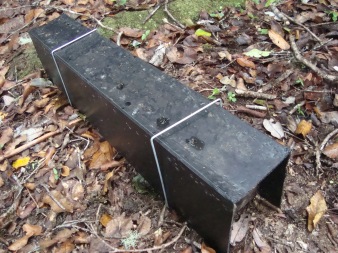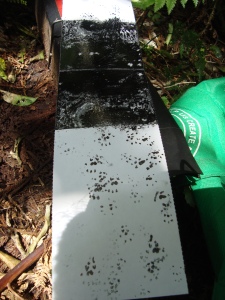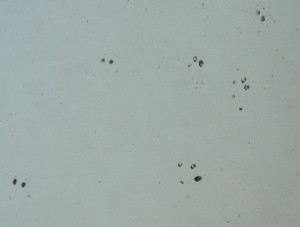When conservationists talk about densities of particular animals in certain areas how do they know what these are? Where do they get these numbers from? Of course these numbers cannot be exact, but through certain methods fairly accurate approximations can be achieved. In this post I am going to write about the most common method used to determine pest, particularly rodent, densities: tracking tunnels.
Tracking tunnels simply consist of long rectangular tubes, inside which a card and an ink pad can be placed. Originally a sponge soaked with colouring was used, but as this can get messy and takes longer to set up, most now use cards with a pre-inked section. These types of cards are called Black Trakka and were developed by Warren Agnew in New Zealand, and are now used in many countries around the world.
Typically peanut butter is smeared in the middle of the tunnel to attract animals in and onto the ink, and so when they exit, they leave footprints on the clean card on either end. Peanut butter best attracts rats and mice, while either fresh or salted rabbit or possum meat are better lures for mustelids. To get animal densities, called tracking indices, tracking tunnels are placed on pre-determined lines in the bush. Most commonly 10 are placed at 50m intervals along each line. The cards are left over night, and when collected the next day the footprints are used to determine what animals had been there.
The indices are worked out as a percentage of cards which show a particular animals footprint. For example, if 8 of 10 cards on a line showed rat footprints, this would give a relative index of 80% for rat density in that area. If there is trapping and/or baiting for pests in an area, it is ideal to run tracking tunnels (in the same places each time), at least once a month. In this way reliable comparisons will be able to be made to get an idea of how well the pest control is taking effect in that area.
Tracking tunnels can also be used for interest sake, for example in your own backyard to see what you have running around outside your home. Tracking tunnels are simple to make yourself, the DOC website has a good method for making your own. And of course you will need to be able to identify the footprints left. I found the gotcha traps website (the makers of Black Trakka) have some good detailed information and pictures to help with identification of a number of animals in New Zealand, including small mammals, some insects and lizards.



